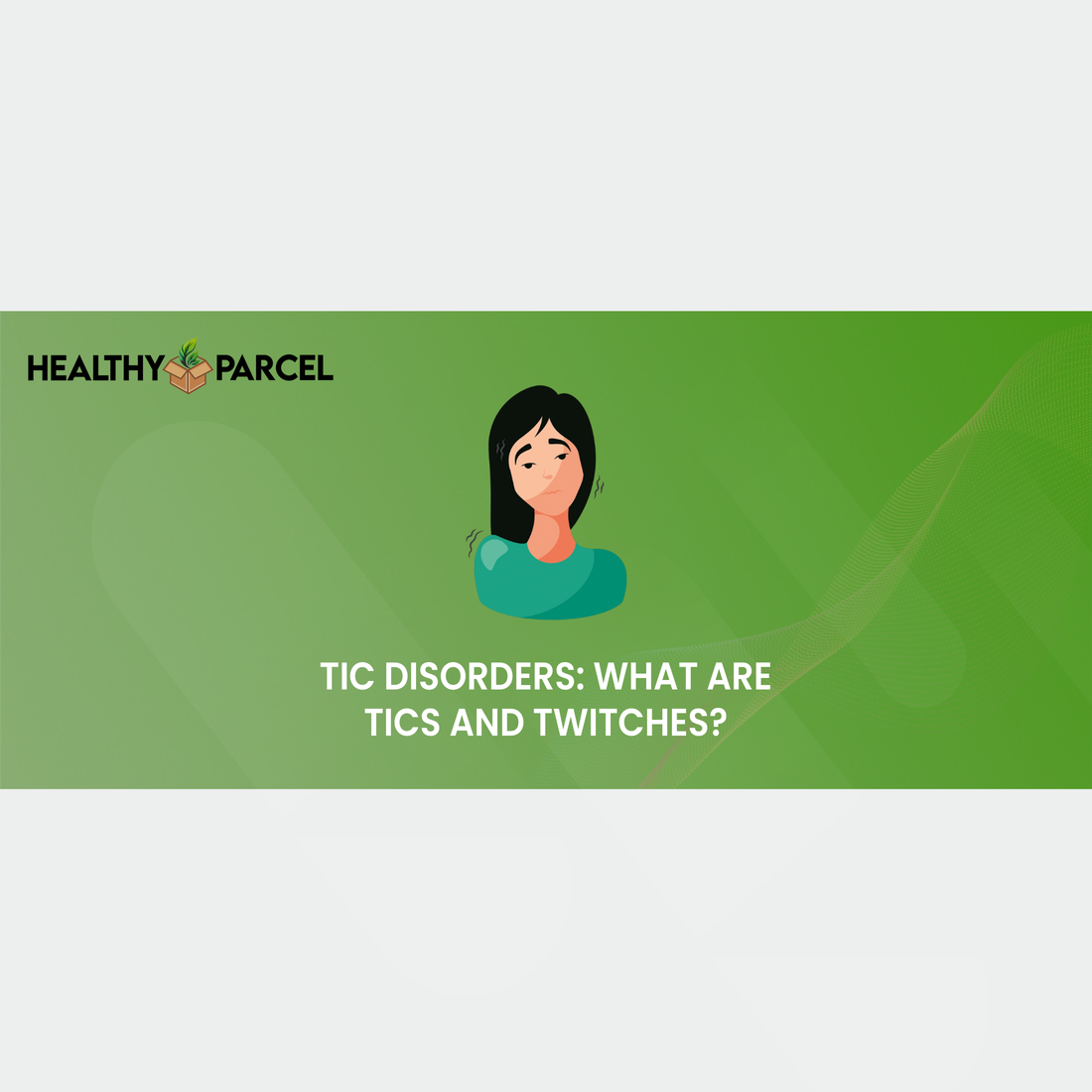Many people experience spasm-like movements in certain muscles at some point. These movements, called tics and twitches, often affect the eyelids or face, but they can occur anywhere in the body.
Most of the time, tics and twitches are harmless and temporary. However, in some cases, they may be caused by a tic disorder. Tic disorders can usually be managed with treatment and lifestyle changes.
What are Tics and Twitches?

While many people use "tic" and "twitch" interchangeably, there are differences between these movements.
Tics

There are two types of tics—motor tics and vocal tics. These are short, sudden movements (motor tics) or sounds (vocal tics) that occur unexpectedly during normal behavior. Tics are often repetitive, involving repeated occurrences of the same action. For example, someone with a tic might blink their eyes multiple times or repeatedly twitch their nose.
Motor tics can be simple or complex. Simple motor tics include movements like eye-blinking, nose-twitching, head-jerking, or shoulder-shrugging. Complex motor tics involve a series of movements performed in a specific sequence, such as repeatedly reaching out to touch something or kicking one leg and then the other.
Tics are often classified as unvoluntary movements, meaning people can suppress them for a while. However, this suppression usually leads to growing discomfort until the tic is performed.
Tics can occur in people of all ages but are most common in children. Experts estimate that around 20% of children experience tics, with boys being more affected than girls.
The exact cause of tics is unknown, but stress and sleep deprivation seem to influence their occurrence and severity.
Doctors once thought that certain medications, including those for attention deficit hyperactivity disorder, caused tics in children prone to them. However, newer studies suggest this is not the case.
Twitches

Unlike tics, most muscle twitches are isolated occurrences, not repeated actions. Known as myoclonic jerks, twitches are completely involuntary and cannot be controlled or suppressed.
One type of muscle twitch is benign essential blepharospasm, where the muscles of one or both eyelids twitch uncontrollably. This can happen repeatedly over a sustained period. In rare, extreme cases, it may also involve the eyebrows, mouth, and neck.
Although an eyelid twitch may resemble an eye-blinking tic, it is different because it cannot be controlled and occurs mostly in adults. A doctor can determine whether you or your child is experiencing tics or an eyelid twitch based on the symptoms.
Experts believe eyelid twitching in blepharospasm is caused by the misfiring of certain cells in a specific area of the brain. Eyelid twitches can be aggravated by dry eyes, stress, lack of sleep, caffeine, and harsh light conditions.
What Are the Common Tic Disorders?
Most tics are not severe and have minimal impact on a person's quality of life. However, in some cases, tics can be frequent enough to be disruptive and troubling, affecting various aspects of a person's life, including school, work, and social interactions.
Doctors use four criteria to identify and diagnose tic disorders:
- The age when tics began
- The duration of the tics
- The severity of the tics
- Whether the tics are motor, vocal, or both
Transient Tic Disorder

This disorder usually appears in youth and affects up to 20% of school-age children. It is characterized by the presence of one or more tics for at least one month but less than a year. Most tics in this disorder are motor tics, although vocal tics can also occur.
Many children with transient tic disorder experience multiple episodes of transient tics, which may vary in how they manifest over time.
Chronic Motor or Vocal Tic Disorder

Unlike transient tics, which disappear within a year, chronic tics can persist for a year or more. This disorder is characterized by one or more long-lasting tics, which can be either motor or vocal, but not both. For a diagnosis, symptoms must start before age 18.
Chronic tics are relatively rare, affecting fewer than 5 in 100 children.
Tourette's Syndrome

Sometimes, what seems to be a chronic tic may actually be Tourette's syndrome, the most severe tic disorder. Tourette's is marked by the presence of both motor and vocal tics.
Because many individuals with Tourette's are undiagnosed, the exact number of people in the U.S. with the condition is unknown. However, experts estimate that about 138,000 children in the U.S. have Tourette's syndrome. Symptoms usually begin between ages 5 and 18.
The severity of Tourette's syndrome often changes over time, with periods of reduced tic frequency followed by increased tic activity. Fortunately, many people with Tourette's find that their condition improves as they age.
How Are Tic Disorders Treated?
Treatment for tic disorders depends on the severity of the condition. Often, no treatment is necessary, and the tics resolve on their own.
In other cases, doctors may recommend behavioral therapy, medication, or a combination of both. Behavioral therapy helps individuals manage their tic symptoms and reduce their frequency. Medications are typically prescribed to lessen tic frequency and improve daily life, although they usually do not completely eliminate tic symptoms.
Conclusion
Tics and twitches are common muscle movements that are usually harmless. Tics, which can be motor or vocal, are repetitive and sometimes controllable. Twitches are isolated and involuntary. Tic disorders, such as transient tic disorder, chronic motor or vocal tic disorder, and Tourette's syndrome, vary in severity and can impact daily life but are treatable with behavioral therapy and medication. Most tics in children are temporary and resolve on their own. Understanding these conditions helps in managing symptoms and improving quality of life.

